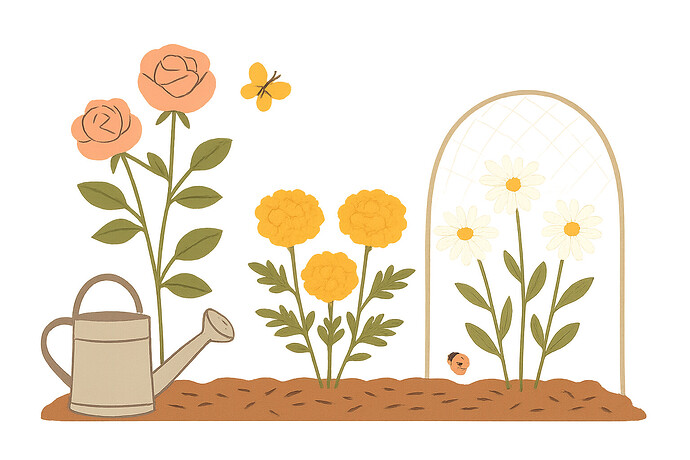If you’re growing roses, petunias, marigolds, or native wildflowers, maintaining the health and bloom of your flowering plants requires consistent care and preventive measures. Here in the USA, where the weather and pest pressures vary by region, protecting your blossoms becomes even more essential. This is a guide for hobbyists, backyard gardeners, and even community greenthumbs to help your flowers thrive.
1. Pest Control: The First Line of Defense
Flowering plants attract not only pollinators but also pests like aphids, spider mites, whiteflies, and beetles.
Tips:
- Neem Oil or Insecticidal Soap: Spray weekly in the early morning or late evening to avoid harming bees.
- Beneficial Insects: Introduce ladybugs, lacewings, or parasitic wasps to control soft-bodied insects naturally.
- Manual Inspection: Regularly check leaves and buds; remove pests by hand or prune infested parts.
2. Disease Prevention: Keep Fungus and Rot at Bay
Common diseases like powdery mildew, rust, and root rot can quickly ruin a flowering season.
Tips:
- Watering Technique: Always water at the base—avoid overhead watering to keep leaves dry.
- Pruning and Spacing: Ensure good airflow by trimming excess growth and keeping adequate spacing between plants.
- Sanitation: Remove dead leaves and debris that can harbor pathogens.
- Fungicide Spray (if needed): Organic options like copper fungicide or sulfur spray can help in humid conditions.
3. Weather Protection: Be Ready for Seasonal Extremes
From spring frosts to summer heatwaves and fall rains, weather can be unpredictable.
Tips:
- Frost Protection: Cover plants with row covers or frost blankets during early spring or fall.
- Shade Cloth: Use during heatwaves to reduce sun scorch on delicate blooms.
- Rain Protection: Use plastic tunnels or elevated pots to prevent waterlogging during heavy rains.
4. Soil and Nutrient Management
Healthy soil leads to strong, blooming plants with natural resistance to stress.
Tips:
- Compost & Mulch: Enrich soil with organic compost and add mulch to retain moisture and suppress weeds.
- Balanced Fertilization: Use a bloom-boosting fertilizer high in phosphorus (e.g., 10-20-10). Avoid over-fertilizing, which can harm roots.
- Soil Testing: Check pH and nutrient balance every season to tailor soil amendments effectively.
5. Wildlife and Animal Protection
Deer, rabbits, and even domestic pets can harm flowering plants.
Tips:
- Physical Barriers: Use chicken wire, raised beds, or fencing around sensitive areas.
- Natural Repellents: Garlic spray, capsaicin-based repellents, or blood meal work effectively for most animals.
- Scent Deterrents: Sprinkle dried lavender, citrus peels, or vinegar-soaked cloths to keep animals away.
6. General Maintenance Habits for Healthy Blooms
Routine care and observation often make the biggest difference.
Tips:
- Deadheading: Regularly remove spent blooms to encourage new flowers.
- Weekly Inspections: Look for early signs of discoloration, wilting, or pest activity.
- Record Keeping: Maintain a garden journal to track planting dates, bloom times, and any issues.
7. Special Regional Notes (U.S. Focused)
- Northeast & Midwest: Watch out for late frosts and fungal diseases.
- Southeast: High humidity means fungal control is vital.
- Southwest: Shade and irrigation are key due to dry heat.
- Pacific Northwest: Slugs and excessive rain require vigilant protection.
Protecting flowering plants is about building resilience from the soil up. Regular attention, seasonal preparedness, and natural methods can transform your garden into a long-blooming haven.
We’d love to hear from you ![]() : What challenges do you face with your flowers? Share tips, pictures, or questions with the community in the reply post below!
: What challenges do you face with your flowers? Share tips, pictures, or questions with the community in the reply post below!
